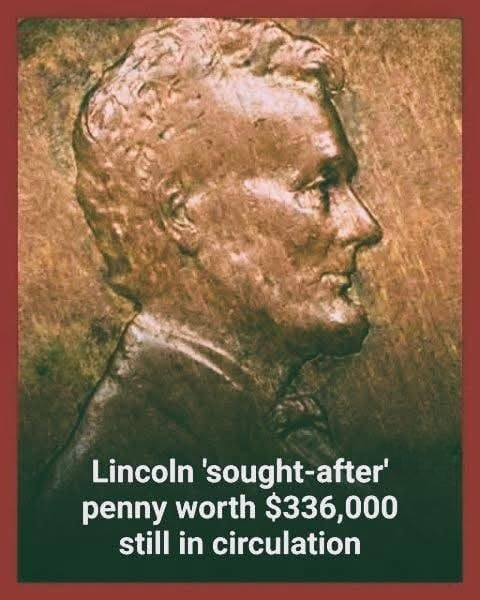In the vast landscape of American history, few objects manage to blend mystery, chance, and national heritage as seamlessly as the 1943 Bronze Lincoln Cent. To most, a penny might seem insignificant — a small, everyday coin passed through countless hands without thought. Yet, for collectors, historians, and enthusiasts, this particular cent stands as one of the most iconic numismatic discoveries ever made in the United States.
The story of the 1943 Bronze Lincoln Cent is one of accidental creation, wartime necessity, and the unyielding curiosity of generations who refused to stop searching for rare beauty hidden within ordinary change. It is a tale that connects economics, industry, and human perseverance — reminding us that even a humble penny can tell a story of national transformation.
1. America in 1943: A Nation at War and in Transition
To understand how this unique coin came to exist, it’s important to revisit the world in which it was born. The early 1940s were among the most challenging years in American history. The Second World War was at its height, and the United States was fully mobilized — every factory, farm, and household working tirelessly toward victory.
In those years, the country was driven by rationing and sacrifice. Essential materials such as copper, rubber, and steel were redirected from consumer production to military use. Copper, in particular, was an essential component for munitions, communication lines, and vehicle manufacturing. It became so vital that the U.S. Mint faced an unexpected challenge: how to continue producing pennies without using a metal that the military needed in massive quantities.
After months of experimentation and planning, the government introduced a new composition for the Lincoln cent — replacing copper with zinc-coated steel. The decision, though practical, forever altered the look and feel of one of America’s most familiar coins.
2. A Coin of Steel and Sacrifice
The 1943 Lincoln cent marked a historic shift in U.S. minting. The coin’s core was made of steel, coated with a thin layer of zinc to resist corrosion. Unlike the warm brown tone of earlier pennies, these new coins gleamed silver-white and were often mistaken for dimes.
While many Americans initially found the change surprising, they soon accepted it as part of the broader national effort. Posters and radio announcements encouraged citizens to support “Victory Pennies,” framing the new design as a patriotic contribution to the war.
Yet, hidden among the millions of steel cents struck that year, a few extraordinary exceptions slipped through — bronze blanks that were never meant to be used.
3. The Accidental Creation of a Numismatic Legend
Amid the massive wartime coin production, a small number of leftover bronze planchets — copper-alloy blanks from 1942 — found their way into the coin presses by mistake. When these bronze blanks were struck with the 1943 dies bearing Abraham Lincoln’s portrait, a legendary error was born.
Fewer than 25 genuine bronze 1943 cents are known to exist today. They were produced across three U.S. Mints: Philadelphia, Denver, and San Francisco. Each one carries immense historical and monetary value. The unintentional blend of old material with new policy created a perfect storm of rarity.
These rare bronze cents weren’t discovered immediately. In fact, they didn’t come to public attention until 1947, when one was found in everyday circulation. The story spread rapidly, inspiring newspaper features and sparking a nationwide treasure hunt. Children and adults alike began checking their pocket change, dreaming of discovering one of the legendary “copper pennies of 1943.”
4. Design and Legacy: A Familiar Face, A Hidden Mystery
The 1943 Bronze Lincoln Cent maintains the classic design created by Victor David Brenner in 1909. On the obverse, Abraham Lincoln’s dignified profile appears beside the words “In God We Trust.” The reverse displays two wheat stalks surrounding the denomination “One Cent” and the inscription “E Pluribus Unum.” Because of this design, early pennies from 1909 to 1958 are often called “Wheat Cents” or “Wheat Pennies.”
To the untrained eye, a bronze 1943 cent might look no different from an earlier year’s penny. But a closer look reveals the truth. The key difference lies in the material: the standard 1943 coins were silver-toned steel, while the rare bronze versions retained the reddish-brown hue of pre-war pennies.
That subtle difference is what transformed a common coin into a national sensation — proof that history can hide in plain sight.
5. Authenticating the Genuine 1943 Bronze Cent
Because of its value, the 1943 Bronze Lincoln Cent has been replicated and forged countless times. Collectors and curious individuals often attempt to test their coins at home, but experts emphasize that only professional authentication can confirm authenticity.
Common Tests Include:
- Magnet Test: Steel cents are magnetic; bronze ones are not. If a 1943 penny sticks to a magnet, it’s steel and not the rare bronze variety.
- Weight Test: Genuine bronze cents weigh about 3.11 grams, while steel cents weigh roughly 2.7 grams.
- Visual Examination: Authentic bronze coins show natural aging and patina, while counterfeits may appear unnaturally shiny or artificially aged.
However, these methods are only preliminary. Professional organizations such as the Professional Coin Grading Service (PCGS) and the Numismatic Guaranty Company (NGC) provide certified authentication, ensuring that genuine pieces are identified and protected from imitation.
6. Famous Discoveries and Record-Breaking Auctions
The fascination surrounding the 1943 Bronze Cent has only grown over time, with each discovery adding to its legend. Every few years, stories emerge of individuals finding one in old collections, safe deposit boxes, or family heirlooms.
Auction houses have repeatedly seen these coins break records:
- 1996: An uncirculated bronze cent sold for $204,000 at a Heritage Auction.
- 2010: A coin discovered decades earlier by a 14-year-old boy reportedly sold for an astonishing $1.7 million.
- 2021: Another certified example fetched $840,000 amid competitive private bidding.
These figures highlight the enduring power of rarity and history — a blend that continues to fuel collectors’ imaginations. To own a 1943 Bronze Lincoln Cent is to hold a tangible piece of America’s wartime story.
7. The Science Behind Coin Errors
Minting millions of coins each day leaves little room for perfection. The 1943 Bronze Cent is part of a broader category of “mint error coins,” which are accidental variations produced during coin manufacturing.
Types of Coin Errors:
- Planchet Errors: Occur when the wrong metal blank is used, as in the case of the 1943 bronze cents.
- Die Errors: When damaged dies produce coins with doubled designs, cracks, or missing elements.
- Striking Errors: Happen when coins are struck off-center, rotated, or with insufficient pressure.
Such errors are generally rare, but wartime production demands made oversights more likely. Today, these mistakes are not viewed as flaws but as remarkable artifacts that document the complexity of the minting process.
8. Wartime Economy and Public Perception
The introduction of steel pennies in 1943 reflected a nation unified under the pressures of war. For many Americans, the silver-toned coins were symbolic of collective sacrifice. However, the sudden change did cause confusion. Some vending machines rejected the steel cents, while others mistook them for dimes.
Despite these hiccups, citizens quickly adapted. The “Victory Penny” became a small yet powerful reminder of patriotism — proof that even in times of scarcity, Americans could innovate and adapt for the greater good.
Years later, the rediscovery of a few leftover bronze coins transformed that chapter of history into one of the most intriguing tales in American numismatics.
9. The Enduring Allure of the 1943 Bronze Cent
More than eight decades after its creation, the 1943 Bronze Lincoln Cent remains one of the most talked-about coins in the world. Its appeal lies in its extraordinary blend of history, rarity, and mystery.
For historians, it represents a vivid example of how war reshapes economies and everyday life. For collectors, it symbolizes the ultimate find — the kind of discovery that justifies years of searching. And for everyday people, it’s a comforting reminder that sometimes the smallest things — even a penny — can carry immense value, not only in money but in meaning.
The fascination persists because the coin bridges the ordinary and the extraordinary. Millions of identical coins were minted, yet only a few emerged with this unique error, transforming an oversight into an enduring legend.
10. The Passion and Preservation of Numismatics
Coin collecting, known as numismatics, has long been a beloved pursuit that combines history, art, and economics. Enthusiasts dedicate years to studying mint marks, metal compositions, and die variations. The 1943 Bronze Cent stands as a crown jewel among them — a benchmark for what makes collecting so exciting.
Modern technology has transformed this field. Collectors now connect through online platforms, attend virtual auctions, and use digital databases to verify their coins’ authenticity. Yet, the essence of numismatics remains unchanged — a passion for discovery and preservation.
Institutions such as the American Numismatic Association (ANA) and the Smithsonian National Numismatic Collection continue to protect and display examples of this historic coin, ensuring that future generations can learn from its story.
11. Lessons from an Accidental Masterpiece
The legacy of the 1943 Bronze Lincoln Cent extends beyond its monetary value. It teaches profound lessons about history, imperfection, and the human spirit.
- Accidents Can Shape History: This coin was never meant to exist, yet it became one of the most valuable in U.S. history.
- Every Object Tells a Story: Even the smallest artifacts hold traces of the era that created them.
- Curiosity Fuels Discovery: The search for knowledge and rare beauty continues to drive collectors around the world.
- Preservation Is Priceless: Protecting artifacts — whether a coin, a document, or a photograph — ensures that the lessons of the past endure.
Through these lessons, the 1943 Bronze Cent transforms from a simple piece of metal into a lasting symbol of human curiosity and resilience.
12. Looking Ahead: Numismatics in the Digital Age
As technology continues to evolve, so does the way we engage with history. The field of coin collecting has entered the digital era with new tools for authentication and trading. Blockchain-based systems now allow coins to be verified and tracked permanently, reducing fraud and increasing transparency.
Virtual exhibitions, online databases, and 3D imaging let enthusiasts explore coins from museums around the world without leaving their homes. Even so, the physical allure of a coin like the 1943 Bronze Cent remains unmatched. It represents something tangible — a real connection to a time when every piece of metal carried a purpose greater than itself.
The future may belong to digital assets, but physical currency will always tell the story of humanity’s creativity, economy, and innovation.
Conclusion: The Penny That Changed American Coinage Forever
The 1943 Bronze Lincoln Cent is not just a rare coin — it’s a historical artifact, a collector’s dream, and a powerful symbol of America’s resilience. Born from wartime necessity and human oversight, it became a lasting reminder that even accidents can shape history.
From its humble beginnings in the minting presses of 1943 to the record-breaking auction rooms of today, this coin continues to inspire wonder. It stands as proof that the intersection of human error, craftsmanship, and curiosity can create something truly timeless.
In a world where value is often measured in numbers, the 1943 Bronze Lincoln Cent teaches us something deeper: that meaning lies not only in rarity or wealth but in the stories we preserve and the history we honor. Whether displayed behind museum glass or passed down through generations, this small piece of bronze remains a monumental chapter in the story of American ingenuity.




